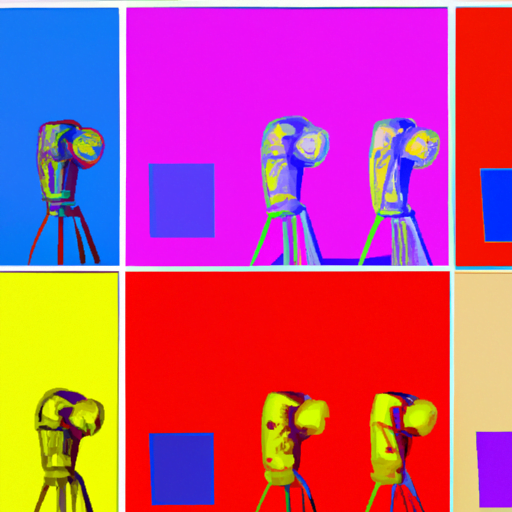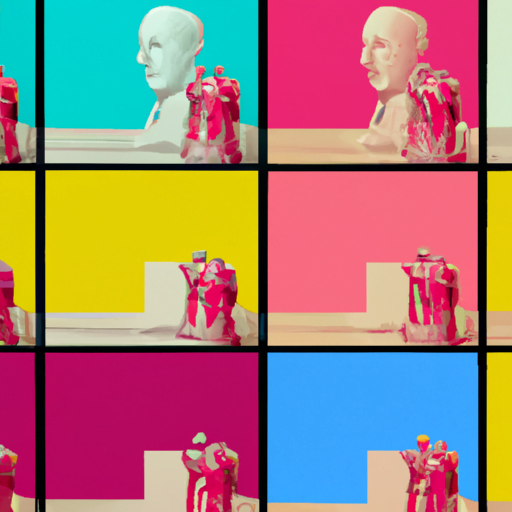
-
Table of Contents
AI-Enhanced Video Editing for Seamless Visual Storytelling

Video editing has come a long way since the early days of linear editing, where physical film reels were cut and spliced together. With the advent of digital technology, video editing has become more accessible and versatile. However, the process of editing videos can still be time-consuming and challenging, requiring skilled professionals to create a seamless visual storytelling experience. This is where AI-enhanced video editing comes into play.
The Rise of AI in Video Editing
Artificial Intelligence (AI) has revolutionized various industries, and video editing is no exception. AI algorithms can analyze and understand video content, enabling automated editing processes that were previously only possible through manual intervention. By leveraging AI, video editors can save time, enhance creativity, and deliver high-quality videos.
One of the key areas where AI has made significant advancements in video editing is in the realm of visual effects. Traditionally, adding visual effects to videos required complex software and extensive manual work. However, AI-powered tools can now automatically detect and track objects in a video, allowing for seamless integration of visual effects. For example, AI algorithms can identify a person’s face and overlay digital makeup or change facial expressions in real-time.
Automated Video Editing with AI
AI-powered video editing tools can automate various aspects of the editing process, making it faster and more efficient. These tools use machine learning algorithms to analyze video content, identify key elements, and make intelligent editing decisions. Here are some examples of how AI can enhance video editing:
- Automated scene detection: AI algorithms can analyze video footage and automatically detect scene changes, making it easier to organize and edit large amounts of footage.
- Smart trimming: AI can identify the most engaging parts of a video and automatically trim out unnecessary content, saving time and improving the overall flow of the video.
- Automated color correction: AI algorithms can analyze the color balance and lighting conditions in a video and automatically adjust them to create a more visually appealing result.
- Intelligent audio editing: AI can analyze audio tracks and automatically remove background noise, enhance speech clarity, or even generate background music that matches the mood of the video.
These AI-powered editing tools not only save time but also enable video editors to focus on the creative aspects of storytelling. By automating repetitive tasks, editors can spend more time refining the narrative, experimenting with different visual styles, and adding their artistic touch to the final product.
Case Studies: AI in Video Editing
Several companies have already embraced AI-enhanced video editing and have seen remarkable results. Let’s explore a few case studies that highlight the impact of AI in video editing:
1. Adobe Sensei
Adobe Sensei is an AI-powered platform that integrates with Adobe Premiere Pro, one of the leading video editing software. Sensei uses machine learning algorithms to automate various editing tasks, such as scene detection, color grading, and audio editing. By leveraging Sensei, video editors can save time and achieve consistent results across their projects.
For example, Sensei’s automated scene detection feature can analyze hours of footage and automatically create a rough cut by identifying the best shots and assembling them into a sequence. This significantly speeds up the editing process, allowing editors to focus on refining the story rather than spending hours manually reviewing footage.
2. Magisto
Magisto is an AI-powered video editing platform that caters to businesses and individuals looking to create professional-looking videos without extensive editing skills. Magisto’s AI algorithms analyze the uploaded footage, identify the most engaging moments, and automatically create a polished video with transitions, effects, and music.
Magisto’s AI-powered editing capabilities have been particularly useful for small businesses and social media influencers who need to create high-quality videos quickly. By automating the editing process, Magisto enables users to focus on their core business activities while still producing visually appealing videos.
The Future of AI-Enhanced Video Editing
As AI continues to advance, we can expect even more exciting developments in the field of video editing. Here are some potential future trends:
- Real-time collaboration: AI-powered video editing tools could enable real-time collaboration between multiple editors, allowing them to work on the same project simultaneously.
- Automated storytelling: AI algorithms could analyze video content and automatically generate a narrative structure, making it easier for editors to create compelling stories.
- Personalized editing: AI could analyze individual preferences and editing styles, allowing video editing software to adapt and suggest personalized editing choices.
While AI-enhanced video editing offers numerous benefits, it is important to note that it is not meant to replace human creativity and expertise. AI tools should be seen as a complement to human editors, helping them streamline their workflow and unleash their creative potential.
Conclusion
AI-enhanced video editing has the potential to revolutionize the way we create and consume video content. By automating repetitive tasks and providing intelligent editing suggestions, AI tools can save time, enhance creativity, and deliver high-quality videos. As AI continues to evolve, we can expect even more exciting developments in the field of video editing, empowering editors to tell compelling visual stories with ease.
